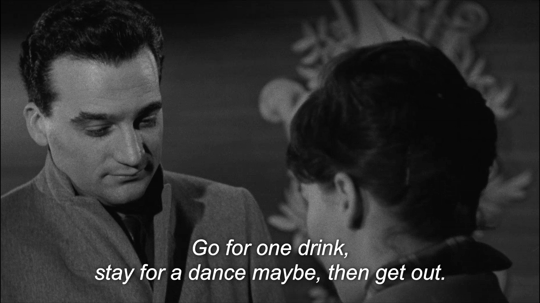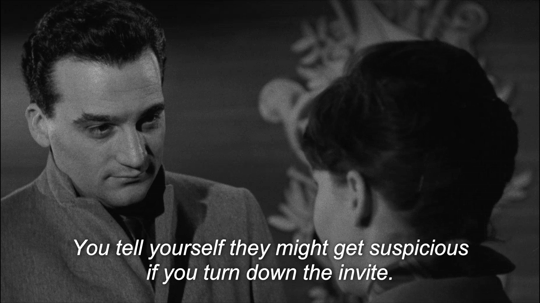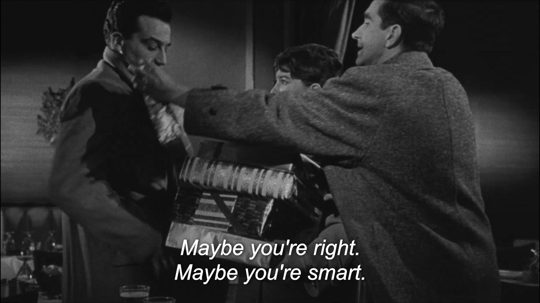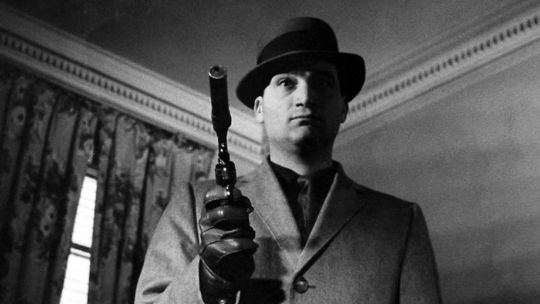#Allen Baron
Text





BLAST OF SILENCE (1961, dir. Allen Baron)
44 notes
·
View notes
Text

Blast of Silence (1961) by Allen Baron
9 notes
·
View notes
Text






Blast of Silence (1961) - dir. Allen Baron
#blast of silence#1961#allen baron#molly mccarthy#danny meehan#film noir#movies#christmas movies#gif
27 notes
·
View notes
Text

Blast of Silence, Allen Baron, 1961
2 notes
·
View notes
Text

Blast of Silence, Allen Baron
#blast of silence#allen baron#1961#black and white#B&W#noir#60s#1960s#movie#film#cinema#cinematography#screencaps#stills
5 notes
·
View notes
Text

3 notes
·
View notes
Text

Allen Baron in Blast of Silence (Allen Baron, 1961)
Cast: Allen Baron, Mollie McCarthy, Larry Tucker, Peter Clune, Danny Meehan, Howard Mann, Lionel Stander (voice). Screenplay: Allen Baron, Waldo Salt (voiceover narration). Cinematography: Merrill S. Brody. Art direction: Charles Rosen. Film editing: Merrill S. Brody, Peggy Lawson. Music: Meyer Kupferman.
A very late film noir, Blast of Silence strips the genre to its bleak essence. A hitman (Allen Baron) comes to New York at Christmastime to whack a guy, falls in love, carries out his job, and pays the consequences for his decision that this would be his last hit. Made on a shoestring with equipment that had been smuggled out of Cuba after Baron appeared in Errol Flynn's last movie, Cuban Rebel Girls (Barry Mahon, 1959), it's a tightly assembled sleeper of a movie that wonderfully milks its New York location and ends with a memorable scene shot on Long Island during Hurricane Donna. Baron had wanted his friend Peter Falk to play the melancholy gunman, but took over the role himself when Falk was unavailable. It's a great one-off of a performance: Baron has no other acting credits besides this one and the Flynn movie, and his directing credits were mostly in TV on shows ranging from Surfside 6 to The Love Boat. The atmosphere of New York in the late 1950s and early '60s is wonderfully captured: That beatnik-era accoutrement the bongo drum makes its appearance at a party and again as the accompaniment to some mopey ballads with titles like "Dressed in Black" and "Torrid Town," sung by Dean Sheldon at the Village Gate nightclub. A voiceover narrative, written by Waldo Salt under his nom de blacklist "Mel Davenport" and read by uncredited fellow blacklistee Lionel Stander, was added after the film was assembled to cover some expository gaps. It's more effective than most voiceovers are at setting the mood and tone of the film, although I find it occasionally too portentous.
2 notes
·
View notes
Text

Blast of Silence (Allen Baron, 1961)
5 notes
·
View notes
Text












Blast of Silence (1961) - Directed by Allen Baron
3 notes
·
View notes
Photo

Allen Baron’s “Blast Of Silence” March 20, 1961.
#Allen Baron#Blast Of Silence#1961#Sixties#Film Noir#Gangster Drama#Crime Drama#Christmas#Hitman Drama#2/5
3 notes
·
View notes
Text
















Blast of Silence (1961)
0 notes
Text
Watched Today: Blast of Silence (1961)


0 notes
Text


Blast of Silence (1961) by Allen Baron
5 notes
·
View notes
Text





Blast of Silence (1961) - dir. Allen Baron
25 notes
·
View notes
Text
Wishing a happy birthday to indie film icon and Blast of Silence star Allen Baron!

#happy birthday#allen baron#birthday#actor#director#blast of silence#foxfire light#pie in the sky#cuban rebel girls#film noir#50s noir#noir alley#tcm underground#movies#film#movie art#art#drawing#movie history
1 note
·
View note
Text
Recently Viewed: Blast of Silence

Having just belatedly watched Allen Baron’s Blast of Silence, I need to reevaluate my perception of an entire subgenre. Although the movie is, in many respects, rather typical of classic noir—featuring voiceover narration that epitomizes purple prose, moody black-and-white cinematography that reduces the visuals to blazingly bright lights and shadowy silhouettes, and a tone boiled so hard that it’ll crack your molars—its comparatively minimalistic, postmodernist approach to the otherwise unapologetically pulpy subject matter (probably necessitated by its evident low budget) shares far more stylistic and thematic DNA in common with Le Samouraï, Branded to Kill, and Taxi Driver—all of which it predates.
Please note that in this case, “minimalism” is not synonymous with “subtlety.” There is, for instance, nothing understated about the score, which blends bongo drums, jazzy trumpets, glockenspiels, and choral hymns into a cacophonous symphony that mirrors the protagonist’s fractured, chaotic psyche. Such blatant “symbolism” permeates the whole narrative. Setting the story in New York City during Christmastime, for example, is as inspired as it is obvious; the cold, brutal urban decay reflects our rugged antihero’s emotional isolation, while the rampant commercialism of the holiday season perfectly complements his mercenary motives. Indeed, the first image that we see is an evocative POV shot of a train speeding through a dark tunnel—a metaphorical “birth” that fires the audience into the film’s violent, morally corrupt world like a bullet erupting from the barrel of a gun.

Bearing these apparent aesthetic contradictions in mind, where does Blast of Silence “belong” in terms of its historical relevance—to the Old School or the New Wave? Should it be ranked alongside the seminal works of such Golden Age Hollywood masters as John Huston, Howard Hawks, and Billy Wilder? Or does it share a closer kinship with the deconstructionist efforts of indie luminaries like Godard, Schrader, and Scorsese (hell, there’s a valid argument to be made that it is, at the very least, a distant cousin to Chantal Akerman’s News from Home)? Ultimately, I’ve arrived at the conclusion that these distinctions aren’t truly important. Art is, of course, a cultural conversation—but confining it to rigid, inflexible “categories” is counterproductive, diminishing the value of individual pieces by arbitrarily attaching them to broader “movements.” Blast of Silence succeeds on its own merits; that it clearly anticipated The American and David Fincher’s The Killer is simply an amusing bit of trivia.
#Blast of Silence#Allen Baron#film noir#Criterion Collection#Criterion Channel#Criterion#film#writing#movie review
1 note
·
View note